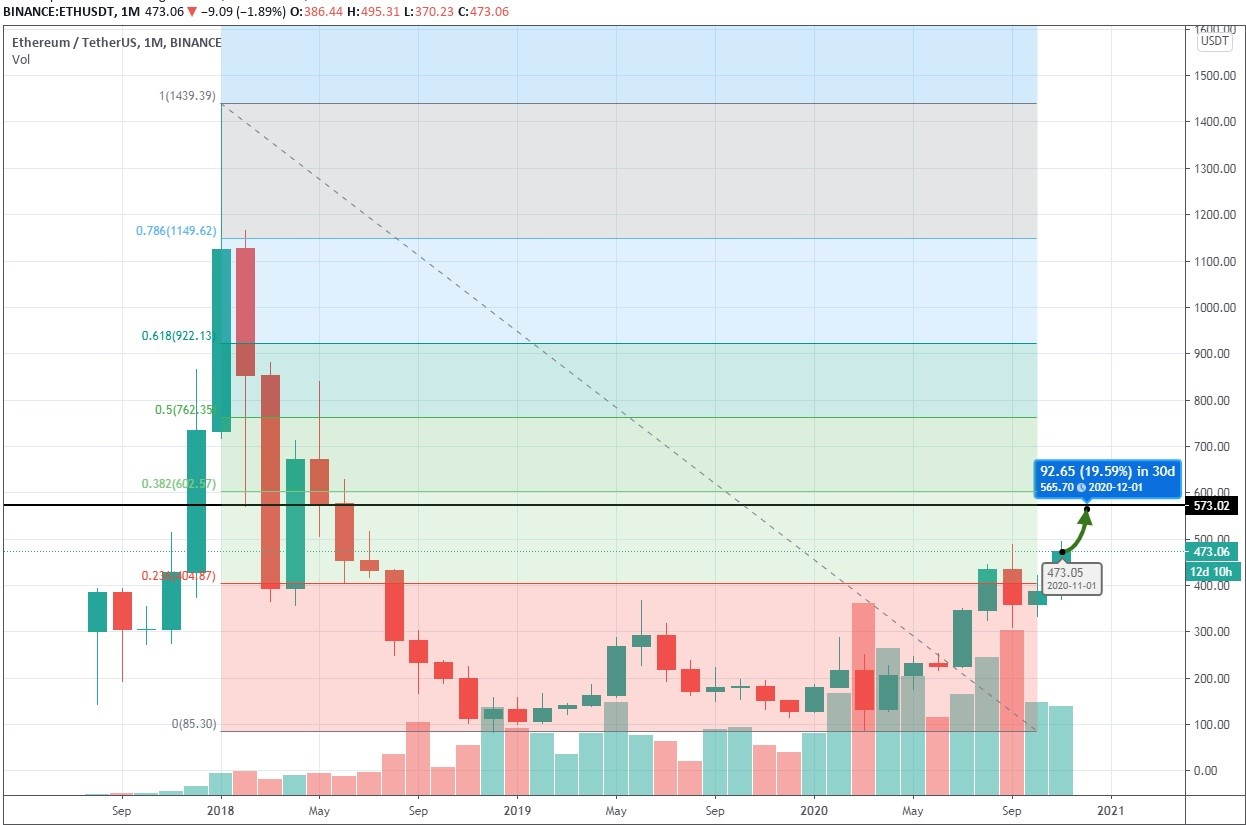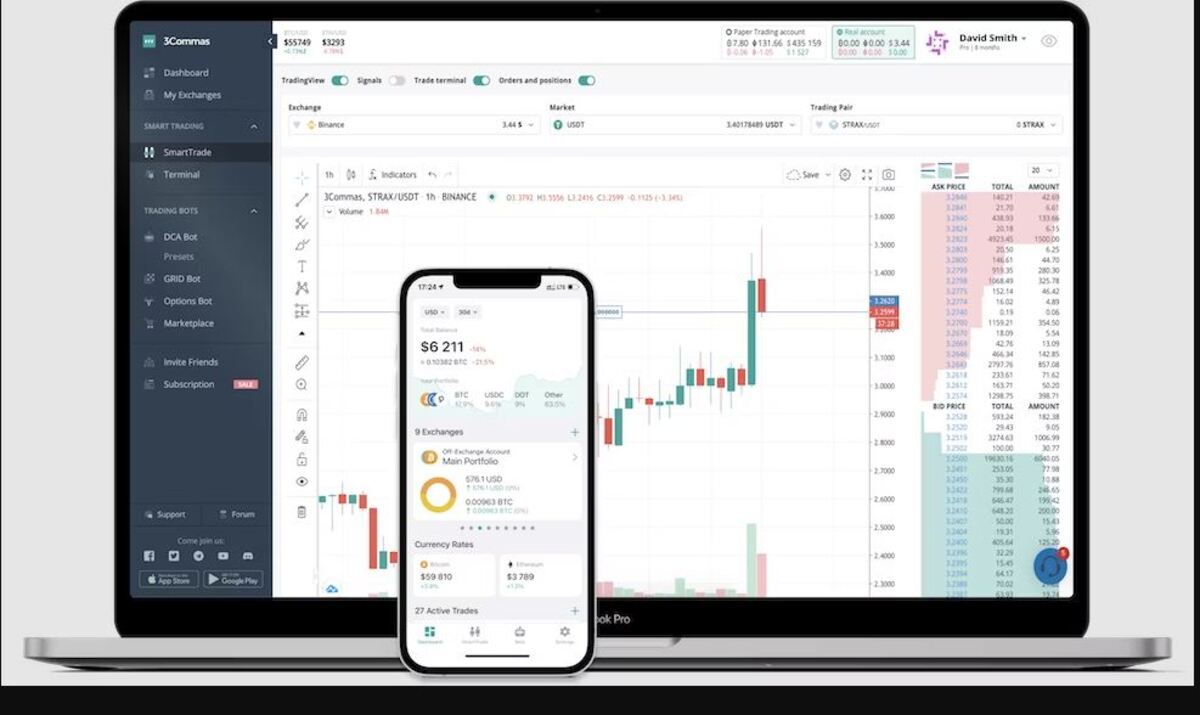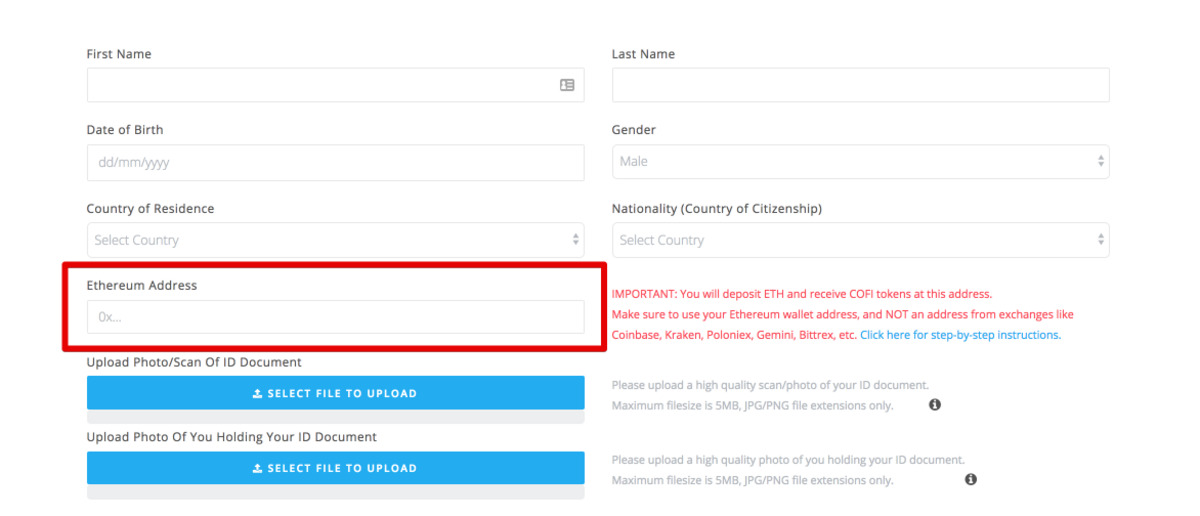Introduction
Welcome to the world of cryptocurrency, where digital currencies are revolutionizing the way we transact and store value. One of the leading cryptocurrencies in this space is Ethereum, often referred to as Ether. As the second-largest cryptocurrency by market capitalization, Ethereum has gained widespread recognition and adoption since its launch in 2015.
So, what exactly is Ethereum? In simple terms, Ethereum is a decentralized blockchain platform that enables the creation and execution of smart contracts. It was invented by Vitalik Buterin, a prominent figure in the cryptocurrency community, with the aim of providing a more versatile and programmable blockchain compared to Bitcoin.
Unlike traditional currencies issued by governments, Ethereum is based on a decentralized ledger known as the blockchain. This means that no central authority or government controls Ethereum transactions. Instead, the Ethereum network is maintained and secured by a network of computers, or nodes, spread across the globe. This decentralized architecture eliminates the need for intermediaries and allows for faster, more secure, and transparent transactions.
The value of Ethereum is determined by a combination of factors, including supply and demand dynamics, market sentiment, technological advancements, and investor perception. As with any asset, price fluctuations are inevitable, and understanding the factors influencing these fluctuations is crucial for investors, traders, and enthusiasts alike.
In this article, we will explore the various factors that can influence the value of Ethereum. We will also delve into the relationship between demand and price, discuss how to measure the value of Ethereum, compare it to other cryptocurrencies, address the role of Bitcoin in Ethereum’s value, and explore the future prospects and potential for growth. By the end of this article, you will have a comprehensive understanding of what determines the value of Ethereum and the factors that can impact its price.
What is Ethereum?
Ethereum is a decentralized blockchain platform that enables the creation and execution of smart contracts. It was created by Vitalik Buterin, a Canadian-Russian programmer, and introduced to the public in 2015. While Bitcoin is primarily used as a digital currency, Ethereum goes beyond that by providing a platform for developers to build decentralized applications (DApps) and execute programmable smart contracts.
At its core, Ethereum is a blockchain-based network that enables peer-to-peer transactions. It operates on the principle of a distributed ledger, where all transactions and smart contracts are recorded on a decentralized network of computers. This ensures transparency, security, and immutability.
Smart contracts, one of the key features of Ethereum, are self-executing contracts with the terms of the agreement directly written into the code. They automatically execute actions and enforce rules without the need for intermediaries. This opens up a world of possibilities, allowing for more efficient and secure transactional processes across various industries.
Ethereum’s native cryptocurrency is called Ether (ETH), often used as a medium of exchange within the Ethereum network. Ether is used to pay for transaction fees and computational services on the platform.
One of the notable advantages of Ethereum is its ability to support decentralized applications. These applications, built on the Ethereum blockchain, operate without any central authority, making them resistant to censorship and single points of failure. Developers can create DApps using programming languages such as Solidity, which is specifically designed for writing smart contracts on the Ethereum network.
Ethereum’s flexibility and programmability have attracted a wide range of industries and developers. It has become a backbone for various sectors, including finance, gaming, supply chain management, and decentralized finance (DeFi). The Ethereum network has also gained traction in the field of non-fungible tokens (NFTs), allowing for the creation and trading of unique digital assets.
Overall, Ethereum has made significant strides in the cryptocurrency space by providing a platform for decentralized applications and programmable smart contracts. Its robust ecosystem and innovative features continue to attract both developers and users, positioning Ethereum as a leading player in the digital currency revolution.
What determines the value of Ethereum?
The value of Ethereum, like any other asset, is determined by a combination of factors that influence its supply and demand dynamics. Understanding these factors is essential for investors and enthusiasts to gauge the potential growth and value of Ethereum. Here are some key elements that play a role in determining the value of Ethereum:
Supply: The total supply of Ethereum is an important factor in assessing its value. Currently, Ethereum operates on a fixed-inflation monetary policy, meaning that a certain amount of new Ether is generated every year to compensate network validators for securing the platform. This predictable supply helps maintain a balanced and stable ecosystem.
Demand: The demand for Ethereum is influenced by several factors. One major driver of demand is the utility and adoption of Ethereum’s underlying technology. The more widely Ethereum is used for developing decentralized applications and executing smart contracts, the higher the demand for Ether is likely to be. Additionally, investor sentiment, market speculation, and macroeconomic factors also contribute to the overall demand for Ethereum.
Market Sentiment: The overall sentiment in the cryptocurrency market can significantly impact the value of Ethereum. Positive news, such as regulatory developments supporting cryptocurrencies or new partnerships and integrations, tends to drive up demand and, subsequently, the price of Ethereum. Conversely, negative news or market uncertainties can lead to a decrease in demand and price volatility.
Technological Developments: Advancements in Ethereum’s technology and network upgrades, such as the recent upgrade to Ethereum 2.0, which introduces a more scalable and eco-friendly consensus mechanism, can have a positive impact on the value of Ethereum. These developments enhance the network’s performance, security, and usability, making it more appealing to users and investors.
Investor Perception: The perception of investors and the wider public towards Ethereum also play a role in determining its value. Positive sentiment and confidence in the long-term potential of Ethereum as a transformative technology can attract more investors and support a higher valuation.
Competition: The presence of other cryptocurrencies and blockchain platforms can affect the value of Ethereum. As the cryptocurrency ecosystem continues to evolve and gain more participants, competition among different platforms may arise. The success and adoption of competing platforms can divert attention and investment away from Ethereum, potentially impacting its value.
Overall, the value of Ethereum is influenced by a complex interplay of supply, demand, market sentiment, technological developments, investor perception, and competition. By understanding these factors, investors and enthusiasts can make informed decisions and assess the potential growth and value of Ethereum.
Factors influencing the value of Ethereum
The value of Ethereum is influenced by various factors that impact its supply and demand dynamics. Understanding these factors can provide valuable insights to investors and enthusiasts looking to assess the potential growth and value of Ethereum. Here are some key elements that influence the value of Ethereum:
1. Market Demand: The demand for Ethereum plays a critical role in its value. The more people and businesses that use Ethereum for transactions, smart contracts, and decentralized applications (DApps), the higher the demand for Ether (ETH) becomes. Additionally, increased adoption and recognition in industries such as finance, gaming, and decentralized finance (DeFi) can also drive up demand.
2. Network Usage: The level of network usage on the Ethereum blockchain affects its value. A highly active network with a significant volume of transactions and smart contracts indicates a strong ecosystem and can lead to increased demand for Ether. Conversely, decreased usage or scalability issues may impact its value.
3. Technology Developments: Advancements and improvements in Ethereum’s technology have a direct impact on its value. Upgrades, such as the transition to Ethereum 2.0, which aims to address scalability issues and increase efficiency, can boost confidence in the network and drive up the value of Ether.
4. Regulatory Environment: The regulatory environment surrounding cryptocurrencies, including Ethereum, can influence its value. Favorable regulations that support the use and adoption of cryptocurrencies generally have a positive impact on value. Conversely, stringent regulations or crackdowns can create uncertainty and negatively affect the value of Ethereum.
5. Market Sentiment: Investor sentiment and market trends can significantly influence the value of Ethereum. Positive sentiment, driven by factors such as positive news, partnerships, or influential endorsements, can lead to increased demand and value. Conversely, negative sentiment, market uncertainties, or negative news can cause a decline in demand and lower the value of Ethereum.
6. Economic Factors: Wider economic factors, such as inflation, interest rates, and global economic stability, can indirectly impact the value of Ethereum. During times of economic uncertainty, investors may turn to cryptocurrencies as a hedge against traditional financial systems, potentially driving up demand and value.
7. Competition: The presence of other cryptocurrencies and blockchain platforms can influence the value of Ethereum. Competition from other platforms offering similar functionalities and use cases may divert attention and investment away from Ethereum, potentially impacting its value.
8. Bitcoin Influence: As the largest and most well-known cryptocurrency, Bitcoin’s performance can influence the value of Ethereum. In some cases, Ethereum may follow Bitcoin’s price movements, reflecting market sentiment towards cryptocurrencies as a whole.
By considering these factors, investors and enthusiasts can gain a deeper understanding of the dynamics that drive the value of Ethereum. However, it is important to note that cryptocurrency markets can be highly volatile, and predicting short-term price movements can be challenging. Conducting thorough research and staying updated on industry developments are vital when assessing the value of Ethereum.
The relationship between demand and price of Ethereum
The demand for Ethereum and its price are closely intertwined, with changes in demand having a direct impact on the price. Understanding the relationship between demand and price is essential for investors and enthusiasts looking to navigate the volatile cryptocurrency market. Here’s an exploration of the relationship between demand and the price of Ethereum:
Basic Supply and Demand: Like any asset, when the demand for Ethereum exceeds the available supply, the price tends to increase. Conversely, if the supply outweighs the demand, the price may decrease. This fundamental principle of supply and demand plays a significant role in determining the price of Ethereum.
Utility and Adoption: Ethereum’s value is intrinsically tied to its utility and adoption. The more individuals, businesses, and developers who use Ethereum for transactions, smart contracts, and decentralized applications (DApps), the higher the demand becomes. Increased utility and adoption drive up the price by creating more demand for Ethereum.
Investor Sentiment: Investor sentiment directly impacts the demand and price of Ethereum. Positive sentiment, driven by factors like positive news, regulatory developments, or high-profile endorsements, generally leads to increased demand and a rise in price. Likewise, negative sentiment, market uncertainties, or negative news can result in decreased demand and a decrease in price.
Network Usage: The level of activity and usage on the Ethereum network plays a crucial role in determining the demand and price of Ethereum. A highly active network with a significant volume of transactions and smart contracts signifies a robust ecosystem, attracting more users and increasing demand for Ether (ETH).
Scarcity: Ethereum’s monetary policy contributes to its value. While Ethereum does not have a hard cap on the total supply, its fixed-inflation monetary policy controls the rate of new Ether issuance. This predictable supply helps maintain scarcity, which can drive up demand and increase the price over time.
Market Competition: The presence of other cryptocurrencies and blockchain platforms can influence the demand and price of Ethereum. If competing platforms offer similar functionalities and use cases that are more attractive to users or investors, it can divert attention and investment away from Ethereum, impacting its demand and price.
Macroeconomic Factors: Wider economic factors can indirectly impact the demand and price of Ethereum. During times of economic uncertainty, investors may turn to cryptocurrencies as a hedge against traditional financial systems, increasing demand for Ethereum and potentially driving up its price. Similarly, factors such as inflation, interest rates, and geopolitical events can influence investor sentiment and affect the demand and price of Ethereum.
It is important to note that the relationship between demand and price in cryptocurrency markets can be highly complex and subject to volatility. Price movements are influenced by a variety of factors, including both fundamental and speculative influences. Therefore, it is crucial for investors and enthusiasts to conduct thorough research, stay informed about market trends, and carefully analyze the dynamics of demand and price when evaluating the value and potential growth of Ethereum.
How to measure the value of Ethereum
Measuring the value of Ethereum involves assessing various factors that indicate its intrinsic worth and potential growth. While cryptocurrency markets can be highly volatile, understanding how to measure the value of Ethereum can provide valuable insights to investors and enthusiasts. Here are some key methods and metrics used to measure the value of Ethereum:
Market Capitalization: Market capitalization is a commonly used metric to measure the value of cryptocurrencies, including Ethereum. It is calculated by multiplying the current price of Ethereum by its total supply. Market capitalization reflects the overall size and perceived value of a cryptocurrency in the market.
Trading Volume: Trading volume represents the total amount of Ethereum traded on cryptocurrency exchanges within a specific time period. Higher trading volumes indicate increased market activity and indicate that there is substantial interest in buying and selling Ethereum. Monitoring trading volume can help gauge the level of demand and liquidity for Ethereum.
Price Charts and Patterns: Analyzing price charts and patterns is a popular method to measure the value of Ethereum. Technical analysis tools and techniques can help identify trends, support and resistance levels, and other factors that can provide insights into the potential price movements of Ethereum.
Network Metrics: Monitoring network metrics can help measure the value of Ethereum based on its usage and activity. Network metrics include the number of active addresses, the number of daily transactions, and the total value locked in DeFi applications built on Ethereum. These metrics provide insights into the popularity, utility, and demand for Ethereum within the decentralized ecosystem.
Ethereum Dominance: Ethereum dominance refers to the market share of Ethereum compared to the total cryptocurrency market capitalization. It provides an indication of Ethereum’s prominence and significance within the broader cryptocurrency ecosystem. Higher Ethereum dominance suggests that Ethereum holds a larger share of the market value compared to other cryptocurrencies.
Project Fundamentals: Evaluating the fundamentals of the Ethereum project is essential when measuring its value. This includes assessing the technology, development roadmap, team behind Ethereum, partnerships, and community support. Positive project fundamentals can contribute to the perceived value and potential growth of Ethereum.
Market Sentiment and News: Market sentiment and news can have a significant impact on the value of Ethereum. Monitoring news and analyzing market sentiment can help measure the overall perception of Ethereum within the cryptocurrency community and identify factors that can influence its value, such as regulatory developments, technological advancements, or market trends.
It is important to note that measuring the value of Ethereum is an ongoing process that requires a combination of quantitative and qualitative analysis. No single metric or method can provide a definitive valuation. Therefore, investors and enthusiasts should gather information from various sources, conduct thorough research, and apply a multidimensional approach to measure the value and growth potential of Ethereum.
Comparison with other cryptocurrencies
When measuring the value and assessing the potential of Ethereum, it is helpful to compare it with other cryptocurrencies in the market. By examining the similarities and differences between Ethereum and its peers, investors and enthusiasts can gain a deeper understanding of its position within the broader cryptocurrency landscape. Here are some key points to consider when comparing Ethereum with other cryptocurrencies:
1. Technology and Use Cases: Ethereum is known for its advanced smart contract functionality and its ability to support the creation of decentralized applications (DApps). When comparing with other cryptocurrencies, it is important to evaluate the technology and use cases offered by each platform. Some cryptocurrencies may specialize in specific areas such as privacy, scalability, or interoperability, while others may focus on different industries or unique features.
2. Market Capitalization: Comparing market capitalization provides insight into the relative size and significance of different cryptocurrencies. Bitcoin continues to hold the largest market capitalization, while Ethereum ranks second. Examining the market capitalization of other cryptocurrencies can help gauge their popularity, adoption, and overall market perception.
3. Network Activity: Monitoring network activity metrics, such as transaction volume and active addresses, can offer insights into the usage and demand of different cryptocurrencies. Ethereum consistently ranks among the top cryptocurrencies in terms of network activity, indicating its position as a widely adopted and utilized platform.
4. Developer Community and Ecosystem: The strength of the developer community and ecosystem surrounding a cryptocurrency is crucial for its long-term development and potential growth. Ethereum has a vibrant and active community of developers and a robust ecosystem of projects built on its platform. Comparing the developer activity and ecosystem of different cryptocurrencies can provide insights into their potential for innovation and adoption.
5. Scalability and Performance: Scalability is a critical challenge for blockchain networks, including Ethereum. Comparing the scalability solutions and performance capabilities of different cryptocurrencies is important when evaluating their potential for mass adoption. Some cryptocurrencies may have implemented or proposed unique solutions for scalability, such as layer 2 solutions or alternative consensus mechanisms.
6. Regulatory Environment: The regulatory landscape can vary among different countries and regions, impacting the legality and acceptance of cryptocurrencies. Comparing how different cryptocurrencies are regulated and perceived by regulators can help assess the potential risks and opportunities associated with each cryptocurrency.
7. Price Volatility: Price volatility is a characteristic of the cryptocurrency market. Comparing the historical price volatility of different cryptocurrencies can help gauge the potential risks and rewards associated with investing in each. It is important to consider the risk tolerance and investment objectives when comparing the price volatility of different cryptocurrencies.
By considering these factors and conducting thorough research, investors and enthusiasts can make more informed decisions when comparing Ethereum with other cryptocurrencies. However, it is crucial to remember that each cryptocurrency has its own unique characteristics and value propositions, and individual research is necessary to understand their strengths, weaknesses, and potential for future growth.
The role of Bitcoin on Ethereum’s value
Bitcoin, the first and most well-known cryptocurrency, has a significant impact on the value and dynamics of the broader cryptocurrency market, including Ethereum. The relationship between Bitcoin and Ethereum is complex, with various factors influencing Ethereum’s value and its correlation with Bitcoin. Here’s a closer look at the role of Bitcoin on Ethereum’s value:
Market Sentiment: Bitcoin’s market sentiment often sets the tone for the broader cryptocurrency market, including Ethereum. As the largest and most established cryptocurrency, positive or negative news and developments surrounding Bitcoin can influence investor sentiment, confidence, and appetite for cryptocurrencies as a whole. If Bitcoin experiences a surge in value or positive market sentiment, it can potentially spill over to Ethereum, increasing demand and driving up its value.
Correlation: Bitcoin and Ethereum often exhibit a correlation in terms of price movements. In certain market conditions, the prices of Bitcoin and Ethereum may move in a similar direction, although the magnitudes of the price movements can differ. This correlation can be influenced by common market factors, investor behavior, or broader macroeconomic trends impacting the cryptocurrency market.
Market Dominance: Bitcoin’s dominance refers to its market share compared to the total cryptocurrency market capitalization. When Bitcoin’s dominance is high, it typically indicates that Bitcoin holds a larger share of the market value compared to other cryptocurrencies, including Ethereum. Changes in Bitcoin’s dominance can signal shifts in investor preferences and potentially impact the valuation of Ethereum.
Trading Pairs and Liquidity: Bitcoin often serves as a key trading pair for Ethereum on cryptocurrency exchanges. The liquidity and trading volume of the ETH/BTC trading pair can influence the availability and accessibility of Ethereum tokens for trading. When Bitcoin experiences high trading volume and liquidity, it can indirectly impact the liquidity and trading activity of Ethereum, thus influencing its value.
Investor Behavior: Investors in the cryptocurrency market often diversify their holdings, which can include both Bitcoin and Ethereum. Fluctuations in Bitcoin’s value may lead to adjustments in portfolio allocations, potentially impacting the demand and value of Ethereum. Additionally, investor sentiment towards Bitcoin, whether positive or negative, can influence perceptions of the broader cryptocurrency market, including Ethereum.
Technology and Innovation: Bitcoin and Ethereum are built on different underlying technologies with distinct purposes. Bitcoin primarily serves as a digital currency and store of value, while Ethereum focuses on smart contracts and decentralized applications. Technological advancements or developments in either Bitcoin or Ethereum can influence market sentiment and impact the value of both cryptocurrencies.
While Bitcoin’s role in influencing Ethereum’s value is undeniable, it is important to note that Ethereum has its own unique characteristics and value propositions. Ethereum’s utility as a platform for decentralized applications and smart contracts distinguishes it from Bitcoin. Nevertheless, monitoring Bitcoin’s performance, market sentiment, and its interplay with Ethereum can help investors and enthusiasts better understand the broader cryptocurrency market and assess the potential value of Ethereum.
Future prospects and potential for growth
Ethereum has shown tremendous growth and potential since its inception, and its future prospects continue to generate excitement among investors and enthusiasts. As a versatile blockchain platform that enables the creation and execution of smart contracts, Ethereum has the potential to revolutionize various industries and reshape the way we transact and interact with digital assets. Here are some key factors that contribute to the future prospects and potential growth of Ethereum:
1. Continued Adoption: Ethereum has already gained significant adoption in various industries, including finance, gaming, supply chain management, and decentralized finance (DeFi). As more individuals, businesses, and developers recognize the benefits and potential of Ethereum, the platform’s adoption is likely to continue to grow. This increased adoption will drive demand for Ether and enhance the overall value of Ethereum.
2. Upcoming Technological Upgrades: Ethereum’s transition to Ethereum 2.0, which aims to address scalability issues, is highly anticipated. The upgrade will introduce Proof of Stake (PoS) consensus, shard chains, and other improvements to enhance performance and efficiency. These technological upgrades have the potential to improve scalability, reduce transaction costs, and increase the number of transactions the Ethereum network can handle, thereby driving further adoption and value.
3. Decentralized Finance (DeFi) Growth: Ethereum has played a crucial role in the rapid growth of the decentralized finance (DeFi) ecosystem. DeFi applications built on the Ethereum platform offer innovative financial services such as lending, borrowing, decentralized exchanges, and yield farming. As the DeFi sector continues to expand, it is expected to bring new users and increased demand for Ethereum, contributing to its future growth.
4. Interoperability and Compatibility: Ethereum’s compatibility with other blockchain platforms and its focus on interoperability make it an attractive choice for developers and projects. The Ethereum Virtual Machine (EVM) is widely used, and many blockchain projects choose to launch their tokens on the Ethereum network through Initial Coin Offerings (ICOs) or token sales. This interoperability enhances Ethereum’s network effect and contributes to its growth potential.
5. Institutional Adoption: Increasingly, institutions are recognizing the value and potential of cryptocurrencies, including Ethereum. As institutional adoption continues to gather pace, it is expected to bring more liquidity, stability, and legitimacy to the cryptocurrency market. This institutional interest in Ethereum could lead to greater investments, enhanced liquidity, and overall growth.
6. Technological Innovation: The Ethereum community is characterized by constant innovation and development. As developers continue to explore and build applications on the Ethereum platform, advancements in technology and new use cases are likely to emerge. These technological innovations can create new opportunities, attract more users, and propel the growth of Ethereum.
7. Regulatory Clarity: Regulatory frameworks surrounding cryptocurrencies, including Ethereum, are still evolving. Clarity in regulations can provide a conducive environment for businesses and investors to operate within the Ethereum ecosystem. Favorable regulations can attract more traditional institutions and investors, leading to increased adoption, liquidity, and growth for Ethereum.
Despite the promising future prospects, it is important to note that the cryptocurrency market is highly volatile and subject to various risks and uncertainties. Factors such as market sentiment, technological advancements, regulatory developments, and competition can significantly impact the growth trajectory of Ethereum. Therefore, investors and enthusiasts should exercise caution, conduct thorough research, and stay informed about market dynamics when assessing the future prospects and potential growth of Ethereum.
Conclusion
Ethereum has emerged as a leading cryptocurrency and blockchain platform, with a solid foundation and promising future. Its ability to execute smart contracts and support decentralized applications has positioned it at the forefront of innovation in the digital currency space. As discussed throughout this article, the value of Ethereum is determined by various factors, including supply and demand dynamics, market sentiment, technological advancements, and investor perception.
Looking ahead, Ethereum’s future prospects and potential for growth remain robust. Continued adoption of Ethereum across various industries, ongoing technological upgrades such as Ethereum 2.0, and the rapid growth of the decentralized finance (DeFi) ecosystem are among the fundamental drivers of Ethereum’s projected growth.
Furthermore, Ethereum’s compatibility and interoperability with other blockchain platforms, as well as its ability to attract institutional investors and navigate regulatory landscapes, contribute to its overall potential for expansion. Additionally, Ethereum’s vibrant developer community and continuous technological innovation further strengthen its growth prospects.
However, it is important to note that the cryptocurrency market is highly dynamic and subject to volatility. The value of Ethereum can fluctuate significantly based on market conditions, investor sentiment, and regulatory developments. Investors and enthusiasts should exercise caution, conduct thorough research, and stay informed about the ever-evolving cryptocurrency landscape.
As Ethereum continues to evolve and mature, it is clear that this blockchain platform has the potential to revolutionize industries and reshape the future of finance, technology, and beyond. With its versatile smart contracts and decentralized applications, Ethereum is poised to play an essential role in the ongoing digital currency revolution.
So, whether you are an investor, developer, or enthusiast, understanding the various factors that influence the value of Ethereum and assessing its future prospects can empower you to make informed decisions in this rapidly evolving cryptocurrency market.

























